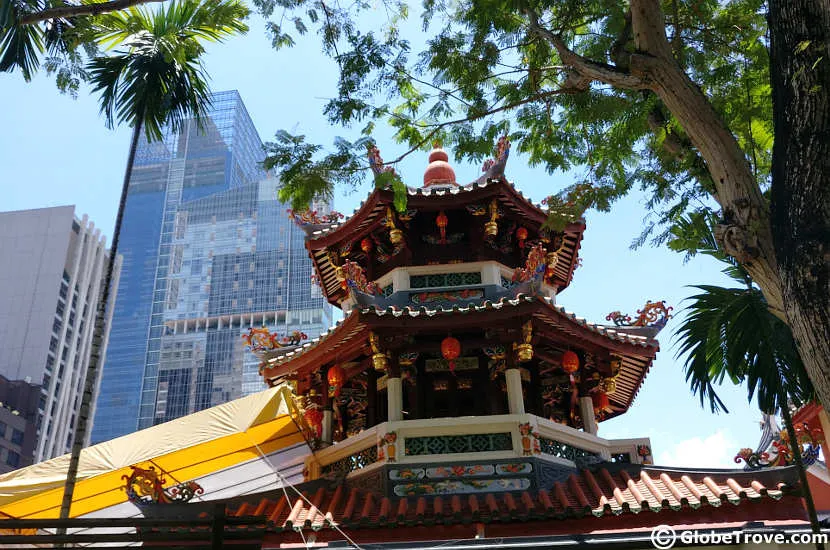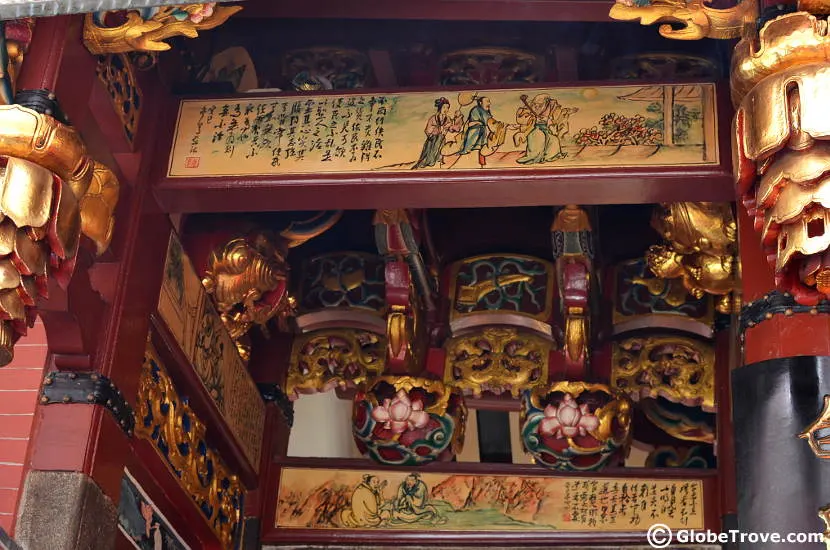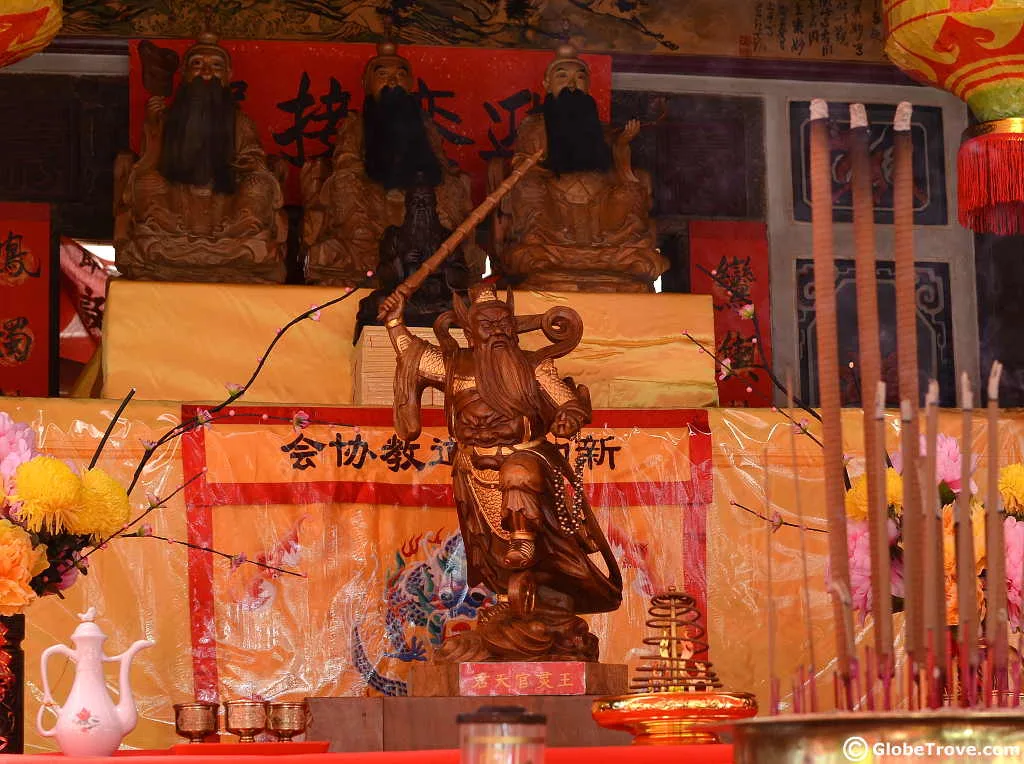Singapore Yu Huang Gong is also popularly known as the Temple of the Heavenly Jade Emperor. The temple’s original name was Keng Teck Whay which is located on the Telok Ayer Street of Chinatown in Singapore, this temple does not get as much attention as it truly deserves.
People often pass it by and visit its larger counterpart the ‘Thian Hock Keng Temple’ instead. Both the temples are impressive and are worth stopping to see.
The Temple of the Heavenly Jade Emperor is a Chinese Taoist temple and is considered a sacred place for the Emperor to show his revelations.
This post may contain affiliate links. As an Amazon Associate, I earn a small commission from qualifying purchases at no additional cost to you. Read my disclaimer for further information.
🏨In a hurry? Book the a room at the Oasia Hotel Downtown. It is a lovely quirky hotel with a the luxury you could need. Plus its walking distance from Chinatown ! 🏨
Temple Etiquette
As usual it is important to maintain proper etiquette when entering the temple as it is a religious place. This means that the legs need to be covered. The rule applies to both men and women.
If you don’t have the appropriate attire, don’t hesitate to ask for a wrap around skirt. It is usually provided at the entrance of the temple.
Photography is not allowed inside the temple. You can click photographs outside the temple.
Inside The Temple Of The Heavenly Jade Emperor

The various points of interests in the Temple of the Heavenly Jade Emperor require a little more detailed observation.
Since I was my first time inside a Taoist temple, I did not know what to look for. The Temple of the Heavenly Jade Emperor is impressive, and it can get overwhelming. There are so many symbols and so many deities.
Luckily for me, the man who was the caretaker of the temple talked me through most of the tour. So, I’m going to share some of the titbits of information that he provided to make your tour of the temple more enriching.
Laozi
As you enter the Temple of the Heavenly Jade Emperor, you will notice a large wooden statue between the two doors. This is Laozi also known as Lao-Tzu, the father/founder of Taoism. He is considered to be the greatest among the pre-Confucian philosophers.
In fact, Laozi and Confucius did meet. A meeting that lead young Confucius to compare Laozi to a great mythical dragon. This was how Taoism and Confucianism crossed paths.
That is why Taoist temples also have Confucian symbols, paintings and carvings.
The Tiles On The Floor
The tiles on the floor of the Temple of the Heavenly Jade Emperor are the original tiles of the temple. They date back to 1847. It’s amazing to think that they lasted almost two decades without fading too much. The tiles that line the walls are newer and are replicas of the original tiles.
The Confucius Paintings

The gorgeous Confucius paintings in the Temple of the Heavenly Jade Emperor.
Above the top of the inner sanctum are lined with paintings and script. These paintings are the Confucius part. They are unique and extremely pretty. I managed to take a photograph of some of the ones that were outside the temple.
The Deities
The deities are all over the inner part of the temple. A chart explaining each deity lies on the right wall. As you walk through the part, you will find that several statues. Each statue represents a section of the years under each of the Chinese signs.
🏨In a hurry? Book the a room at the Oasia Hotel Downtown. It is a lovely quirky hotel with a the luxury you could need. Plus its walking distance from Chinatown ! 🏨
The Temple of the Heavenly Jaded Emperor may be small, but it is impressive. As you allow yourself time to understand the symbolism, the temple becomes even more interesting. It makes a great place to stop along the way.
*This post contains Affiliate links

